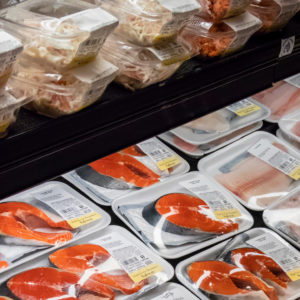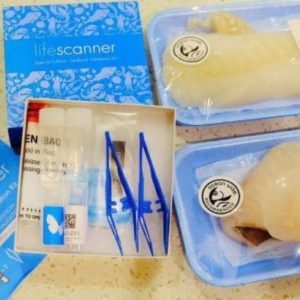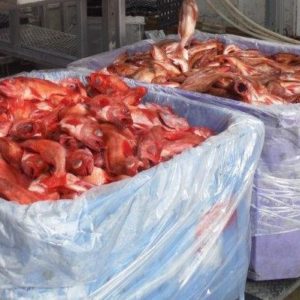Seafood Labelling
Let’s Stop Eating in the Dark
According to Canadian guidelines, a seafood package labeled as “rockfish” could be one of more than 100 possible species, some of which are endangered, and others which are sustainably caught. We think Canadians deserve to know more about their seafood.
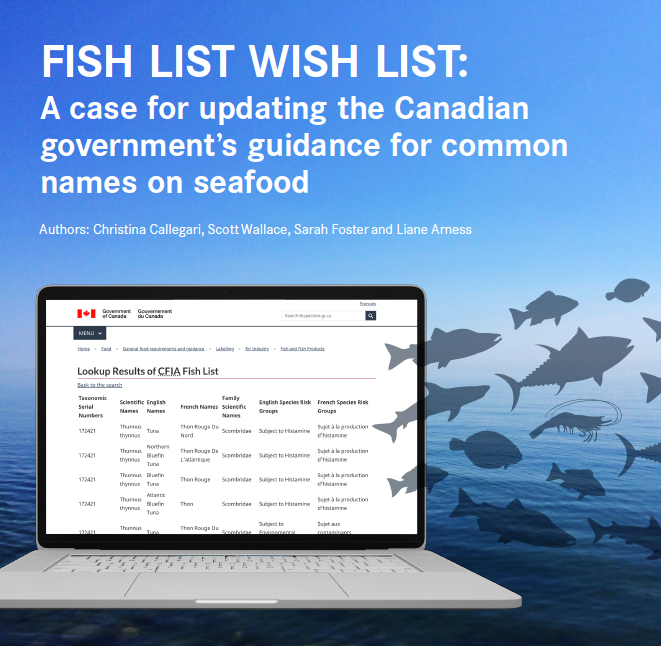 SeaChoice is working with the Canadian government to improve labelling so you know what seafood you’re buying. Our December 2020 report, “Fish List Wish List: A case for updating the Canadian government’s guidance for common names on seafood”, examines the most problematic and misleading common names in the government’s seafood labelling guidelines and provides recommendations for how they can be fixed. You can find more details here.
SeaChoice is working with the Canadian government to improve labelling so you know what seafood you’re buying. Our December 2020 report, “Fish List Wish List: A case for updating the Canadian government’s guidance for common names on seafood”, examines the most problematic and misleading common names in the government’s seafood labelling guidelines and provides recommendations for how they can be fixed. You can find more details here.
In 2017, SeaChoice investigated the labelling requirements for retailers in Canada, the United States and the European Union and released our findings in “Canadians Eating in the Dark: A Report Card of International Seafood Labelling Requirements” (Full report, English summary, French summary). We found that existing labelling laws in Canada do not require retailers to label their product with the necessary information at the point of sale to help consumers make well-informed decisions.
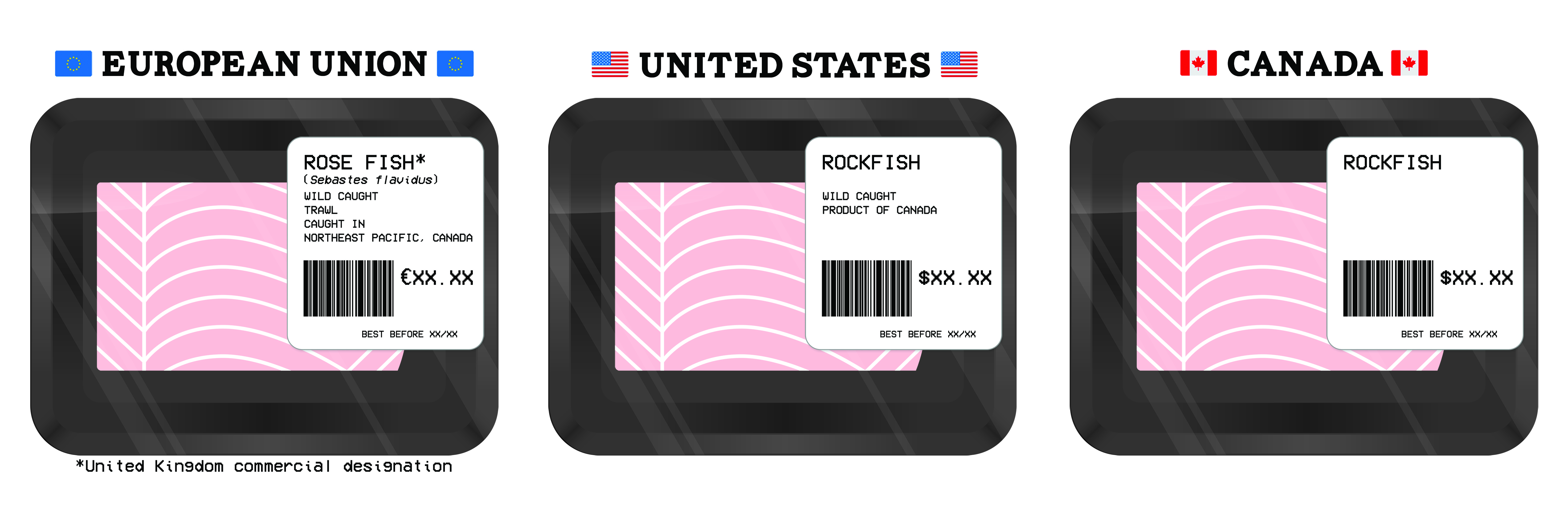
This lack of comprehensive labelling makes it difficult for Canadians to find healthy choices for the oceans, and for their families. It also gets in the way of important economic opportunities for Canada’s fishing industry. Aligning our labelling regulations with those of our major trading partners, namely the United States and the European Union, will facilitate smoother sale and trade operations for Canadian businesses.
Better seafood labelling helps consumers and businesses make more environmentally, socially and economically sustainable choices.
SeaChoice asked, and Canadians answered: Over 12,700 Canadians agree that the government should have stronger seafood labelling regulations that should include:
- Scientific Name – The use of a species-scientific name ensures greater clarity. Common names apply to different species and can vary from region to region and language to language. But a species has just one scientific name.
- Geographic Origin – The location (country) of catch, or the location of the aquaculture operation, should be clear to consumers.
- Production Method (Farmed or Wild) – This simple piece of information can have huge sustainability implications.
- Gear Type or Farming Method – The gear type for wild caught seafood can have very different impacts on the ocean floor and on other species accidentally caught in the gear. For farm-raised species, different farming methods can have very different impacts on the surrounding environment and the native species that live there.
- Traceability systems – To ensure the accuracy of these label claims.
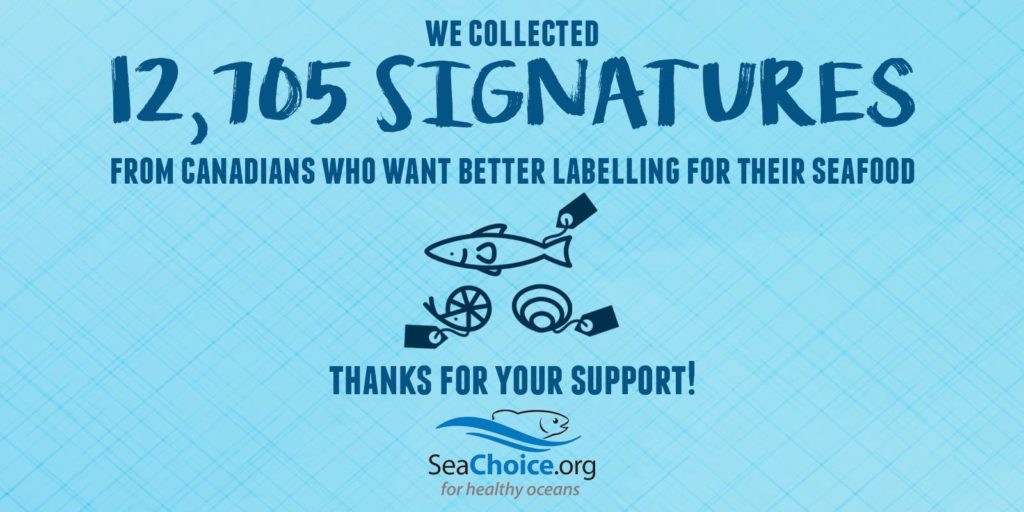
In addition, a recent Eco-Analytics survey of 3,000 Canadians found over 80 per cent agreed that, “All seafood sold in Canada should be labelled with information identifying the species, where it was caught, and how it was caught.” And in summer 2019, more than 7,500 emails were sent to the CFIA by consumers demanding truthful and transparent seafood labelling.
Our Work on Improving Seafood Labelling
SeaChoice has been following federal food policies closely, to ensure our rationale for better seafood labelling is heard.
- In December 2021, we submitted our recommendations and comments for improved seafood labelling during the government’s public consultation on its boat-to-plate traceability program (read our full submission here).
- We submitted detailed recommendations to the Canadian Food Inspection Agency (CFIA) for their Food Labelling Modernization Initiative (FLMI) – both in the Phase 3 Consultation and Gazette Part I Consultation.
- We launched a campaign in support of the FLMI Gazette Part I Consultation, which resulted in more than 7,500 emails sent to CFIA by consumers demanding truthful and transparent seafood labelling.
- We also provided comments to the Safe Food for Canadians Regulations, focusing in on traceability requirements for the seafood supply chain.
- SeaChoice has been working in conjunction with Food Secure Canada to ensure that seafood related concerns are heard as the government develops a new policy – A Food Policy for Canada.
SeaChoice encourages retailers to voluntarily put more information on their seafood labels, to increase transparency, build consumer trust, and follow best practice.
In the fall of 2018 over 3,200 Canadians agreed to #JoinTheShift, signing a letter asking their retailers to source local, traceable, properly labelled fish.
SeaChoice has developed labelling guidelines to support these efforts, and we hope retailers will continue to improve traceability and transparency in their supply chains, going above and beyond Canada’s weak policy requirements.
Watch our labelling and traceability video:
